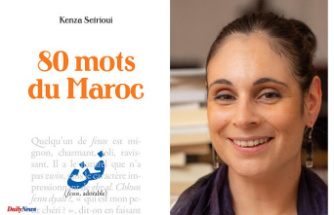Regular airing is essential to prevent mold growth in living spaces. This is especially true if you want to save on heating costs.
In view of the increased energy costs, it can take effort to ventilate the expensively heated rooms. This is not only important to get some fresh air. The regular exchange of air also prevents excess humidity from settling on the walls where mold can form, which is a health hazard.
"A four-person household releases six to twelve liters of water into the air every day," says Arian Freytag from the Mecklenburg-Western Pomeranian Consumer Advice Center. This moist air should be replaced by dry, oxygen-rich air from outside - especially if you want to heat the room less in order to save money.
"If rooms are heated less, the risk of mold increases there," says Matthias Wagnitz from the Central Association for Sanitary, Heating and Air Conditioning. Because while heated air can absorb and bind moisture well, humid air condenses more easily on the colder walls in less heated rooms.
The experts therefore recommend that houses and apartments be ventilated intensively for around five to ten minutes at least in the morning and evening. Cross ventilation is the most efficient, whereby all windows and doors in the living area are open and this creates a draft.
On the other hand, it is of little use to only leave the windows tilted. "This means that rooms cool down unintentionally from the inside out," says Wagnitz. "At the same time, however, only a little fresh air comes into the room due to the narrow tilt position of the window."
In addition, ventilation should always take place when, for example, moisture settles on the window panes or the walls.
Due to the relatively short ventilation intervals, heat loss in the rooms remains low. "We recommend switching off the heating completely during the ventilation phase," says consumer advisor Freytag. Because if the thermostatic valve was turned on, it would immediately try to keep the room temperature stable, even against the inflowing cold air. "So you heat more warm air directly out of the open window."
It makes much more sense to only turn on the radiators again after the room has been aired, so that they quickly return to the desired comfortable temperature. "However, rooms should not cool below 16 degrees Celsius, because then the risk of mold increases significantly," explains Freytag.
There is advice on what the ventilation phases should look like during the heating period: they should be 12 to 15 minutes in October, 8 to 10 minutes in November and 4 to 6 minutes from December to February.
However, the experts refer to the different circumstances of the respective properties and their residents. Apartments in which laundry is often dried inside, which have several residents or in which there are many indoor plants must be ventilated more intensively. Strong wind or high outside air humidity, such as fog, can also affect ventilation efficiency.
The use of the different rooms is also important: In the bedroom, for example, the windows should always be opened before going to bed and shortly after waking up. Even after activities that are associated with a particularly high level of moisture development, such as cooking, showering or washing, the affected room needs fresh air immediately afterwards.
The age and condition of the property also play a role. "In older buildings, a certain exchange of air sometimes takes place through the windows, which are not entirely airtight," explains Wagnitz. "Meanwhile, most buildings are well insulated and the windows are insulated, so humid air can stay here for a long time. That's why regular ventilation is all the more important here."
With all this, it is not easy to find the right balance. But one thing can be said for all circumstances: "Once a room smells musty, it's too late," says Wagnitz. A hygrometer or a ventilation light is helpful. "They show the humidity in a room quite reliably and thus prevent too little or too much ventilation."
Humidity between 40 and 60 percent is considered pleasant by most people and keeps the risk of mold low.
The problems that arise from not ventilating should not be dismissed or underestimated. "Moisture damage with or without mold is the most common housing defect," says Jutta Hartmann from the German Tenants' Association.
If condensation forms on the walls, either the occupant has not ventilated and heated enough or the building has construction defects - these are issues that often only an expert can clarify in disputes between tenants and landlords.
"If the landlord can rule out a building defect as the cause, the tenant must prove that he has ventilated and heated sufficiently within reasonable limits," explains Hartmann. What is actually reasonable depends on the individual case. "Relevant are the age and the condition of the apartment as well as the living conditions of the tenant."












